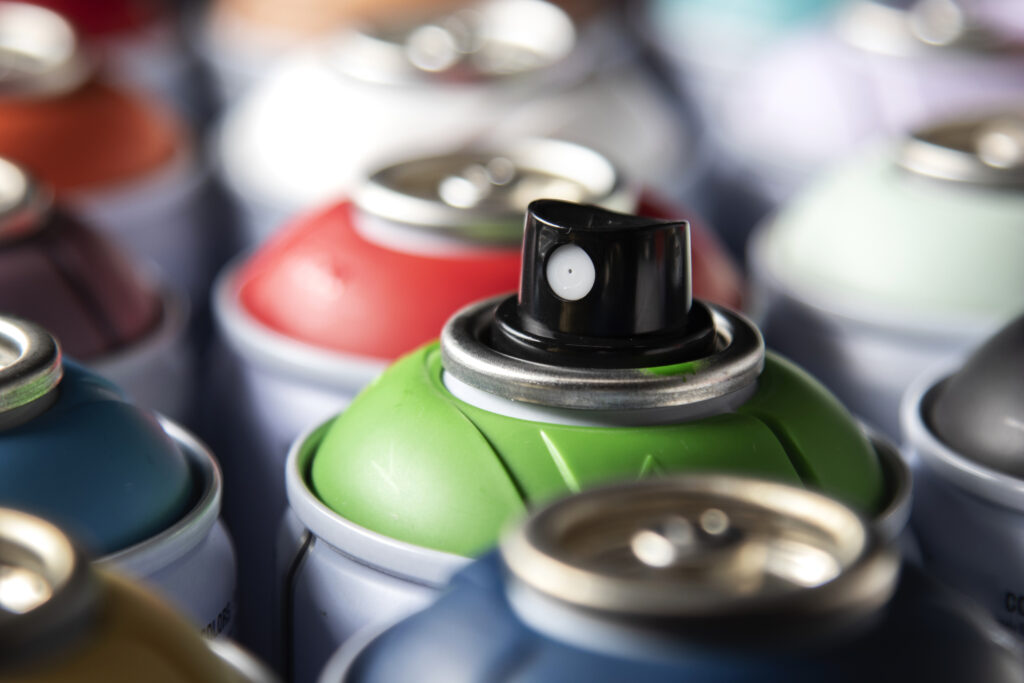Using a clear coat from an Aerosol Can is a game-changer for DIY enthusiasts and professionals alike. Whether you’re refinishing a car, protecting a piece of furniture, or adding a glossy sheen to a craft project, clear coat aerosol sprays offer a convenient way to achieve a durable, high-quality finish. But let’s be real—getting that flawless, mirror-like shine isn’t as simple as pointing and spraying. It takes know-how, a bit of finesse, and some insider tricks to make the most of this versatile product. In this article, we’ll dive into the nitty-gritty of applying clear coat from an aerosol can, share practical tips, and answer common questions to help you nail the process. Whether you’re a first-timer or a seasoned user, you’ll walk away with actionable insights to elevate your projects.
Why Choose a Clear Coat Aerosol Spray?
Clear coat aerosol sprays are a go-to for anyone looking to protect surfaces while adding a professional-grade finish. The beauty of an aerosol can lies in its portability, ease of use, and ability to deliver a consistent, even coat without the hassle of mixing or specialized equipment. From automotive touch-ups to woodworking, these cans are designed to provide a protective layer that guards against scratches, UV rays, and environmental wear. Plus, they’re perfect for small-scale projects where busting out a spray gun just isn’t practical.
But not all aerosol cans are created equal. The quality of the aerosol valve and nozzle can make or break your application. A well-designed valve ensures a steady flow and minimizes clogs, while a precision nozzle lets you control the spray pattern. This is where sourcing from reliable suppliers comes in—high-quality aerosol cans are built to perform consistently, saving you time and frustration.
Preparation: The Key to a Flawless Finish
Before you even think about shaking that aerosol can, prep work is non-negotiable. A smooth, clean surface is the foundation of a great clear coat application. Start by sanding the surface with fine-grit sandpaper (800-1200 grit for automotive projects, 400-600 for wood). Wipe it down with a tack cloth or a lint-free rag dampened with mineral spirits to remove dust and debris. If you’re working on a car, degrease the surface with a mild solvent to ensure no oils or contaminants interfere with adhesion.
Pro Tip: Always test your aerosol can on a piece of cardboard or scrap material before spraying your project. This lets you check the spray pattern and get a feel for the flow. Hold the can about 8-12 inches from the surface and use short, sweeping motions. Too close, and you’ll get drips; too far, and the finish will look grainy.
Application Techniques for Success
Now, let’s get to the fun part—spraying the clear coat. Timing and technique are everything here. Shake the aerosol can vigorously for at least a minute to mix the contents thoroughly. A well-mixed can ensures the clear coat goes on evenly without streaks or cloudiness. Apply the first coat lightly—a tack coat—to create a base for subsequent layers. Let it dry for 5-10 minutes (check the can’s instructions for exact times) before adding a second, slightly heavier coat.
Insider Secret: If you’re working in humid conditions, mist a tiny amount of water into the air (not directly on the surface!) before spraying. This can help reduce static and prevent dust from settling on your wet clear coat. Just don’t overdo it—nobody wants water spots ruining their finish.
Apply 2-3 light coats, allowing each to flash off (dry to the touch) before the next. Avoid the temptation to lay it on thick in one go—patience is your friend. If you notice a run or drip, don’t panic. Let it dry completely, sand it out with 1500-grit sandpaper, and reapply a light coat.
Maximizing Durability and Shine
Once your clear coat is applied, curing is where the magic happens. Most aerosol clear coats take 24-48 hours to fully cure, depending on temperature and humidity. Keep your project in a dust-free, well-ventilated area during this time. For an extra glossy finish, consider wet sanding with 2000-grit sandpaper after the clear coat has cured, followed by a polishing compound. This step can transform a good finish into a showstopping one.
Practical Hack: If you’re spraying in a garage, hang a plastic sheet around your workspace to create a makeshift spray booth. This keeps dust and bugs at bay, ensuring a smoother finish. Bonus points if you dampen the floor slightly to trap airborne particles.
Choosing the Right Aerosol Can for Your Project
Not every aerosol can is suited for every job. For automotive applications, look for a clear coat with high UV resistance and a glossy finish. For wood or metal, opt for a formula designed for flexibility to prevent cracking. Pay attention to the aerosol valve quality—cheap valves can sputter or clog, ruining your flow. Suppliers who prioritize precision manufacturing, like those offering high-quality aluminum aerosol cans, ensure consistent performance. Check out trusted sources for Aerosol Can options that meet these standards.
Troubleshooting Common Issues
Even the best-laid plans can hit a snag. If your clear coat looks orange-peely, you might be spraying too far from the surface or in overly dry conditions. Adjust your distance and try a slightly heavier coat. If the finish is cloudy, it could be due to trapped moisture or an unmixed can—always shake thoroughly and avoid spraying in high humidity.
Quick Fix: For minor imperfections, buff the surface with a rubbing compound after curing. For stubborn issues, sand back to the base layer and start over. It’s a pain, but it’s better than living with a subpar finish.
Frequently Asked Questions (FAQ)
- How many coats of clear coat should I apply from an aerosol can?
Typically, 2-3 light coats are ideal. A tack coat followed by two medium coats provides good coverage without risking runs. Always follow the drying times recommended on the can. - Can I use an aerosol clear coat on any surface?
Most clear coats work on metal, wood, or plastic, but check the product label for compatibility. Some surfaces, like bare plastic, may need a primer first. - Why is my aerosol can clogging?
Clogs often happen due to a poorly designed aerosol valveor improper storage. Always store cans upright and clean the nozzle by turning the can upside down and spraying until only propellant comes out. If clogs persist, consider sourcing cans from suppliers with high-quality valves to meet demand consistently. - How long does it take for the clear coat to cure?
Most aerosol clear coats are touch-dry in 30-60 minutes but take 24-48 hours to fully cure. Avoid handling or exposing the surface to moisture during this time. - Can I polish my clear coat for extra shine?
Absolutely! After curing, wet sand with 2000-grit sandpaper and polish with a quality compound for a mirror-like finish.
Final Thoughts
Mastering the art of applying clear coat from an aerosol can is all about preparation, technique, and patience. With the right approach, you can achieve a professional-grade finish that protects and enhances your project. By choosing high-quality aerosol cans with reliable aerosol valves, you’re setting yourself up for success. Whether you’re a hobbyist or a pro, these tips and tricks will help you get the most out of your clear coat aerosol spray. So grab your can, prep your surface, and spray your way to a flawless finish!






